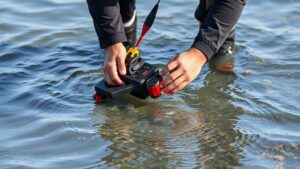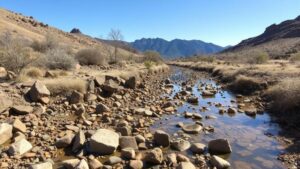Detecting for Artifacts in Flooded Caverns and Underground Springs
Detecting Artifacts in Flooded Caverns and Underground Springs
The exploration of flooded caverns and underground springs can reveal significant archaeological artifacts that provide insights into past human activities. But, detecting these artifacts is challenging due to the submerged and often hazardous conditions present in these environments. This article provides a comprehensive overview of the methods, technologies, and best practices for detecting artifacts in such challenging contexts, along with examples and case studies to illustrate these concepts.
The Importance of Detecting Artifacts
Understanding human history is greatly enhanced by finding artifacts, especially in less disturbed environments like flooded caverns. Artifacts can include tools, pottery, and biological remains, each telling unique stories about the people who once inhabited these spaces. For example, archaeological evidence from submerged caves in Florida has unveiled information about Paleo-Indian populations who inhabited North America over 10,000 years ago.
Challenges of Artifact Detection
Detecting artifacts in flooded conditions presents multiple challenges:
- Visibility: Poor visibility in murky waters makes it difficult to locate artifacts.
- Accessibility: Some caverns may be difficult to access due to narrow openings or strong currents.
- Safety Risks: Exploring flooded areas presents risks such as drowning, hypothermia, and encounters with unstable geological formations.
Given these factors, a carefully planned approach is essential for successful artifact detection.
Technological Innovations in Detection Methods
Several technologies and methodologies have been refined to aid in the detection of artifacts underwater. Here are some of the most effective tools and technologies used today:
- Sonar Imaging: Sonar technology, particularly side-scan sonar, has proven instrumental in mapping underwater landscapes and detecting submerged objects. For example, researchers utilized sonar in the exploration of the underwater caves of the Yucatán Peninsula, allowing them to identify potential artifact locations that manual searching would have missed.
- Underwater Drones: AUVs (Autonomous Underwater Vehicles) equipped with cameras and sensors can reduce risks by remotely exploring flooded caverns. The use of drones has been effectively documented in exploring the underwater systems of the Great Lakes.
- Magnetometry: This technique detects metallic artifacts by measuring magnetic fields. In the case of submerged World War II shipwrecks, magnetometry has successfully pinpointed locations of interest for further archaeological investigation.
Field Methods and Best Practices
Fieldwork in flooded caverns requires rigorous planning and adherence to safety protocols. Here are some best practices:
- Safety Training: Ensuring all team members are trained in underwater safety and emergency response is critical.
- Site Surveying: Conduct a comprehensive survey of the area using a combination of sonar and land surveys to identify potential sites before diving.
- Documentation: All findings should be meticulously documented, including photography and GPS coordinates, which is essential for preserving the integrity of the site and facilitating further research.
Real-World Applications and Case Studies
Several significant projects have implemented these methods successfully:
- Cave of Swimmers, Egypt: Researchers employed underwater cameras and sonar mapping techniques to document preserved artifacts, leading to enhanced understanding of ancient human activity in the region.
- Floridas Wet Caves: Using a combination of diver surveys and remote sensing, archaeologists discovered lithic tools dating back thousands of years, providing evidence for early human habitation in a now-submerged environment.
Conclusion and Actionable Takeaways
Detecting artifacts in flooded caverns and springs is a complex yet rewarding task that sheds light on our history. To achieve successful outcomes, archaeologists and researchers should:
- Embrace and utilize modern technology like sonar and underwater drones to streamline their explorations.
- Adhere to strict safety protocols and prepare for the unique challenges of underwater environments.
- Document all findings comprehensively to contribute to a broader understanding of human history.
With careful planning and innovative approaches, the discovery of artifacts in flooded environments can continue to unveil remarkable stories from our past.


